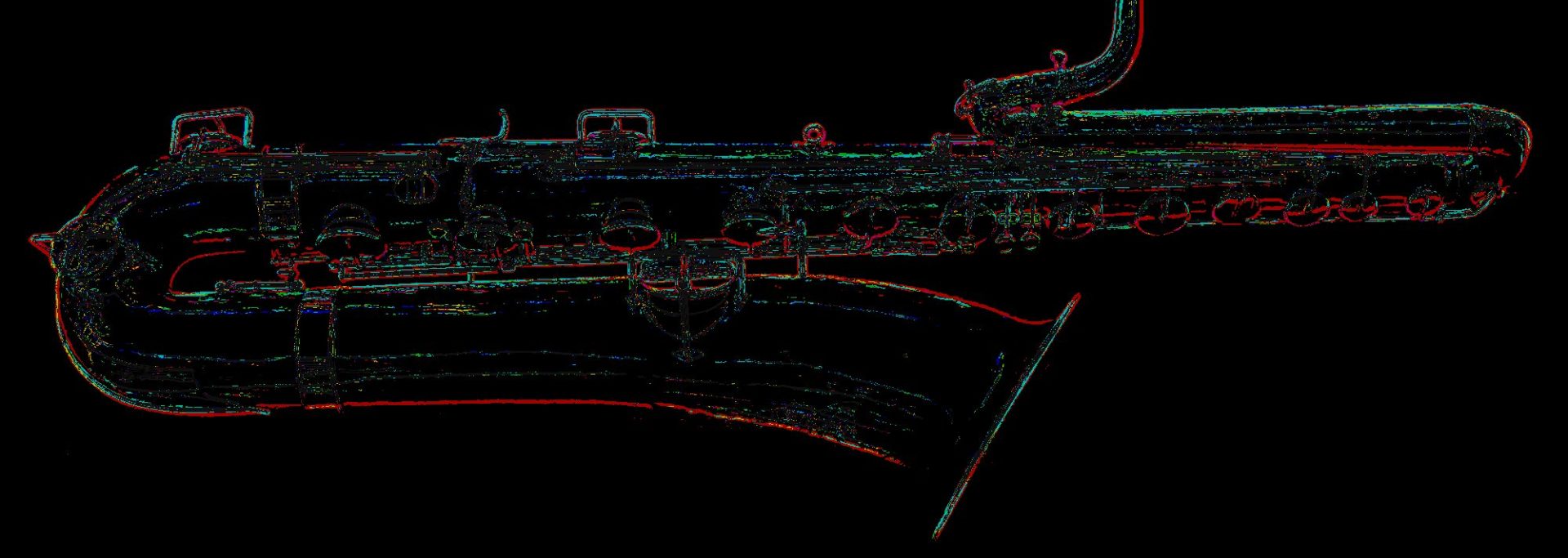Around 1999 a was lucky enough to be given a Martin Handcraft tenor sax. It had definitely seen better days. It had been sitting in a friend’s attic for years in pieces, and was blackened to the pointed where the you couldn’t see any of its silver plate anymore. The original case it was stored all this time, stank beyond belief, even when closed.
I lived in Fredericton, NB at the time, and my repair tech was in Halifax, NS (an almost 5 hour drive), so I only went once a year for about a week, and made a holiday out of it, so Layne could work on my horns. As luck would have it, I happened to be flying to Halifax for a business trip at some point shortly after getting the Martin, so I made arrangements with Layne to drop the sax off with him.
I flew down on Air Canada Jazz, (fitting name, huh?) with my stinky tenor in pieces, as carry on luggage. The flight attendant was most curious as she stored it in the suit compartment of the Dash 8, but luckily she didn’t ask to see the horn. I’d have been very embarrassed! I was worried enough about any odours that might be coming out, despite my attempts to cover them up through all kinds of elaborate means that I can’t even remember anymore!
Anyways, Lanye did an amazing job restoring the beastie, and my Martin is now not only my back-up horn for my Mark VI, but my main horn for electric Blues when I play with Deception.
Photo by M. Margison ©2008
At first I didn’t know much about Martins, because I must admit, I’d always been a bit of a Selmer snob. So when I first got the horn, I did as much research as I could about the brand, and came across a fledgling website called The Martin Story. The site was put together and owned by sax player, and Martin enthusiast, Edwin van Druten, who lived in the Netherlands.
Over the years Edwin’s site has grown, expanded, and has become an incredible resource for anyone looking for information on the Martin brand of saxophones. Models names, distinguishing features, serial number lists, and lots of photos are some of the highlights you’ll find there.
I learnt things about my horn on Edwin’s site that I hadn’t come across anywhere else before. My Handcraft has a serial number of 68XXX, which means it’s circa 1926, but what I didn’t know is it’s considered a phase 2 horn.
Phase 2 production occurred from 1919-1928. It was in phase 2 that Martin introduced bevelled tone holes. Although phase 2 horns didn’t have a front F key, Lanye, my repair tech in Halifax, added one from a YTS-23 when he restored the sax in early 2000. You can see this key clearly in the photo below. (BTW, I left this photo large on purpose. If you want to see more detail, just click on it a couple of times.)
Photo by M. Margison ©2008
So if you’re looking for information on vintage Martin saxophones, the first place you should be checking is The Martin Story.






Hi Steve.
The Indiana was classified as a Martin student/intermediate model of saxophone. According to the serial number chart, it would have been made around 1960.
Regards,
Helen
Hi would you know the year made of a Martin Indiana Serial# 75XXX
thank you
Steve